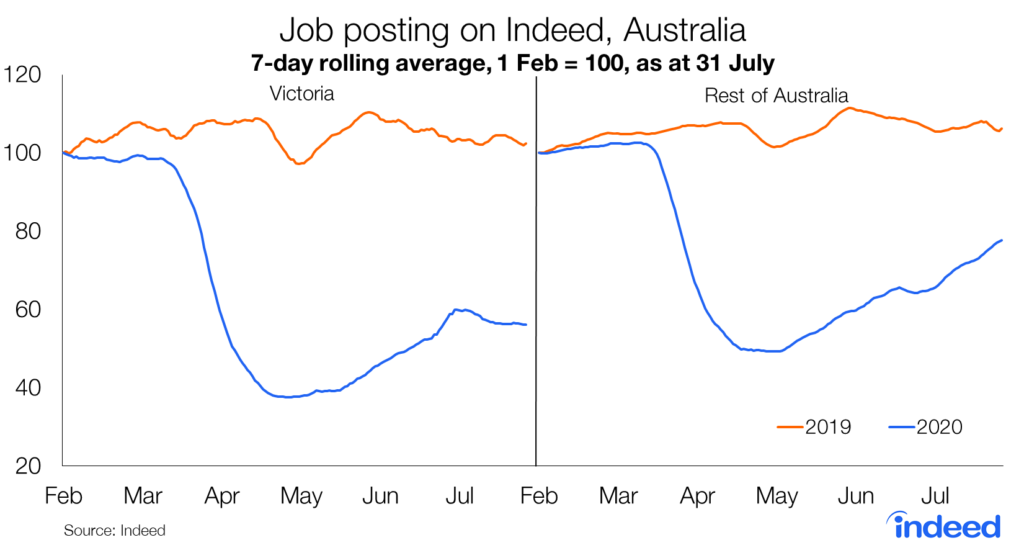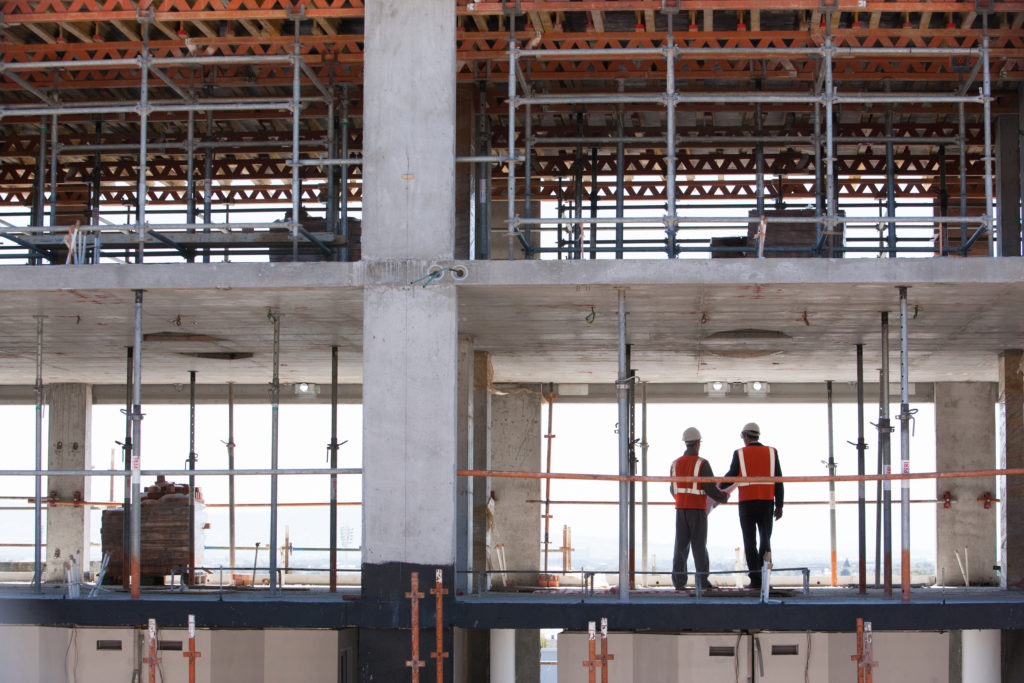Key points:
- Victoria’s second lockdown has created a two-speed recovery, with labour market conditions deteriorating in Victoria while improving elsewhere.
- Job postings in Victoria are tracking 45% below last year’s trend, compared with a 27% gap elsewhere.
- Stage four restrictions are now in place across Victoria until at least 13 September, suggesting that labour market conditions across the state will deteriorate further.
Job postings in Victoria have declined sharply throughout July, as widespread community transmission of COVID-19 forced the state government to reinstate economic restrictions. Elsewhere, the job market continued to improve, creating a wide divergence between Victoria and the rest of Australia.
In Victoria, job postings were tracking 45% below last year’s trend for the week ended 31 July. That compares unfavourably with the 27% gap for the rest of Australia. The gap has widened from 42% in early July, prior to the reinstatement of stage three restrictions on economic activity.

Victoria’s fortunes have changed quickly. In early July, prior to its second lockdown, Victoria’s recovery was tracking only slightly behind the rest of Australia.
The impact of Victoria’s second shutdown is even more evident among new job postings. In Victoria, new job postings – defined as job postings on Indeed AU for seven-days or less – are tracking 31% below last year’s trend. However, for the rest of Australia the gap – that initially emerged in mid-March – has now completely closed.
New postings for Victoria began to deteriorate after 3 July. Had Victoria avoided a second-wave of COVID-19 cases, and job postings had grown at the same pace as the rest of Australia, then new job postings today for Victoria would be almost 50% higher than its current level.
Unfortunately, the situation facing Victoria has only gotten worse. Over the weekend, stage four restrictions were announced that will reduce economic activity even further. These restrictions will run until at least 13 September. There is considerable uncertainty surrounding Victoria’s capacity to contain the spread of COVID-19, with little improvement under stage three lockdowns, as well as the overall economic impact of restrictions that will leave little more than essential services operating.
While it is too early to see the impact of stage four restrictions, Indeed’s data on job postings will be among the first measures that will show the extent to which these restrictions impact labour market conditions. We will be tracking its impact over the coming weeks, expanding upon the growing divergence between Victoria and the rest of Australia.
Methodology
To measure the trends in job postings, we calculated the 7-day moving average of the number of AU job postings on Indeed. We index each day’s 7-day moving average to 1 Feb for that year (1 Feb, 2020 = 100 for 2020 data, and so on), or another date if specified on the chart.
We report how the trend in job postings this year differs from last year, in order to focus on the recent changes in labour market conditions due to COVID-19. For example: if job postings for a country increased 5% from 1 February, 2019, to 28 March, 2019, but fell 25% from 1 February, 2020, to 28 March, 2020, then the index would have risen from 100 to 105 in 2019 and fallen 100 to 75 in 2020. The year-to-date trend in job postings would therefore be down 29% on 28 March (75 is 29% below 105) in 2020 relative to 2019.
The number of job postings on Indeed.com, whether related to paid or unpaid job solicitations, is not indicative of potential revenue or earnings of Indeed, which comprises a significant percentage of the HR Technology segment of its parent company, Recruit Holdings Co., Ltd. Job posting numbers are provided for information purposes only and should not be viewed as an indicator of performance of Indeed or Recruit. Please refer to the Recruit Holdings investor relations website and regulatory filings in Japan for more detailed information on revenue generation by Recruit’s HR Technology segment.






